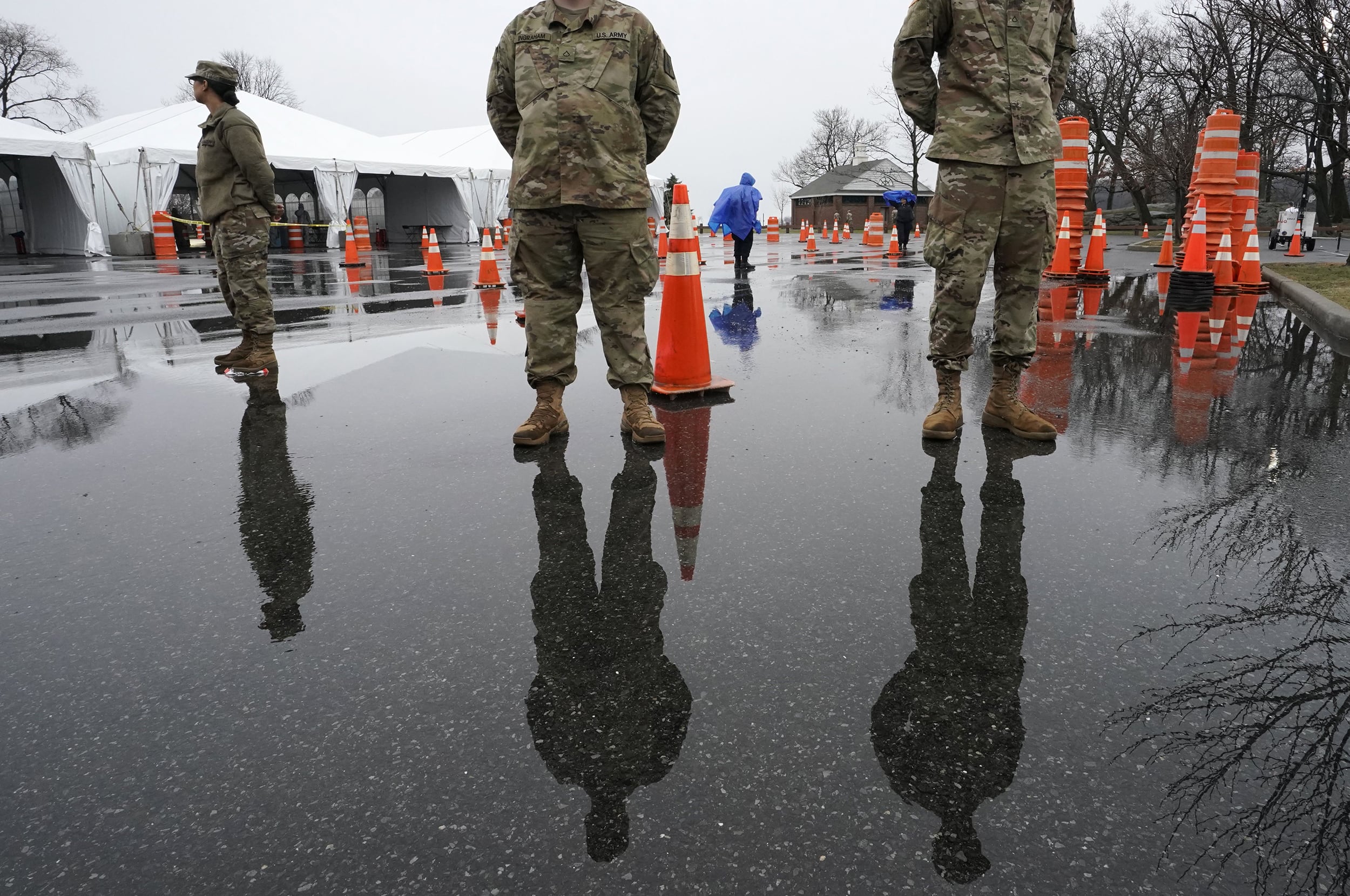Almost two months after military installations around the world went into a partial lockdown to slow the spread of coronavirus, the Pentagon is issuing new guidance for local commanders in states where stay-at-home orders are gradually lifting.
A Tuesday memo lays out the plan for relaxing health protection conditions. Bases across the department have been at HPCON Charlie since late March, a level meant to respond to “sustained community transmission” of an illess, which prohibits non-essential workers and visitors and closes some base facilities.
While local commanders have had the authority to set many of their own policies during the pandemic ― including conducting formations, meetings and physical training ― the “re-opening” of garrisons will be under higher authority.
“We’re going to look at things on two levels,” Defense Secretary Mark Esper told Military Times on May 5.
As states move past quarantine, installations will be beholden to Centers for Disease Control and Prevention, as well as White House coronavirus task force, guidelines and regulations.
“That’s something that will not be made by installation commanders,” Esper said.
RELATED

Commanders will consult with their medical staffs, the memo says, considering local outbreak levels, CDC guidance and the advise of local public health authorities.
“Commanders may set HPCON levels that are more stringent than surrounding community requirements based on mission and other risk considerations,” according to the memo, but if they want to loosen them further, the next step up in their chain of command will have to review them.
These are the rules for making relaxing HPCON Charlie and beyond:
- Two weeks of decreases in locally reported COVID-like or flu-like illness.
- Two weeks of decreases in locally diagnosed COVID-19 cases.
- Adequate bedspace and testing capacity at on-base or local civilian hospitals.
Also included with the memo is a handy reference chart with descriptions of each HPCON level and guidance for what kinds of on-base activities and facilities might be affected.
For example, if downgrading to HPCON B, on-base spread of the virus should have all but stopped, but there might still be some new cases in the local community.
That would still include work-from-home for some groups, including those with vulnerable pre-existing conditions or those who live with them, as well as social distancing measures in general (6-foot spacing, face coverings).
Gatherings should be kept to no more than 10 people, common areas should continue to be reguarly disinfected and schools and childcare centers should stay closed, while some elective outpatient medical procedures are good-to-go.
Meghann Myers is the Pentagon bureau chief at Military Times. She covers operations, policy, personnel, leadership and other issues affecting service members.





